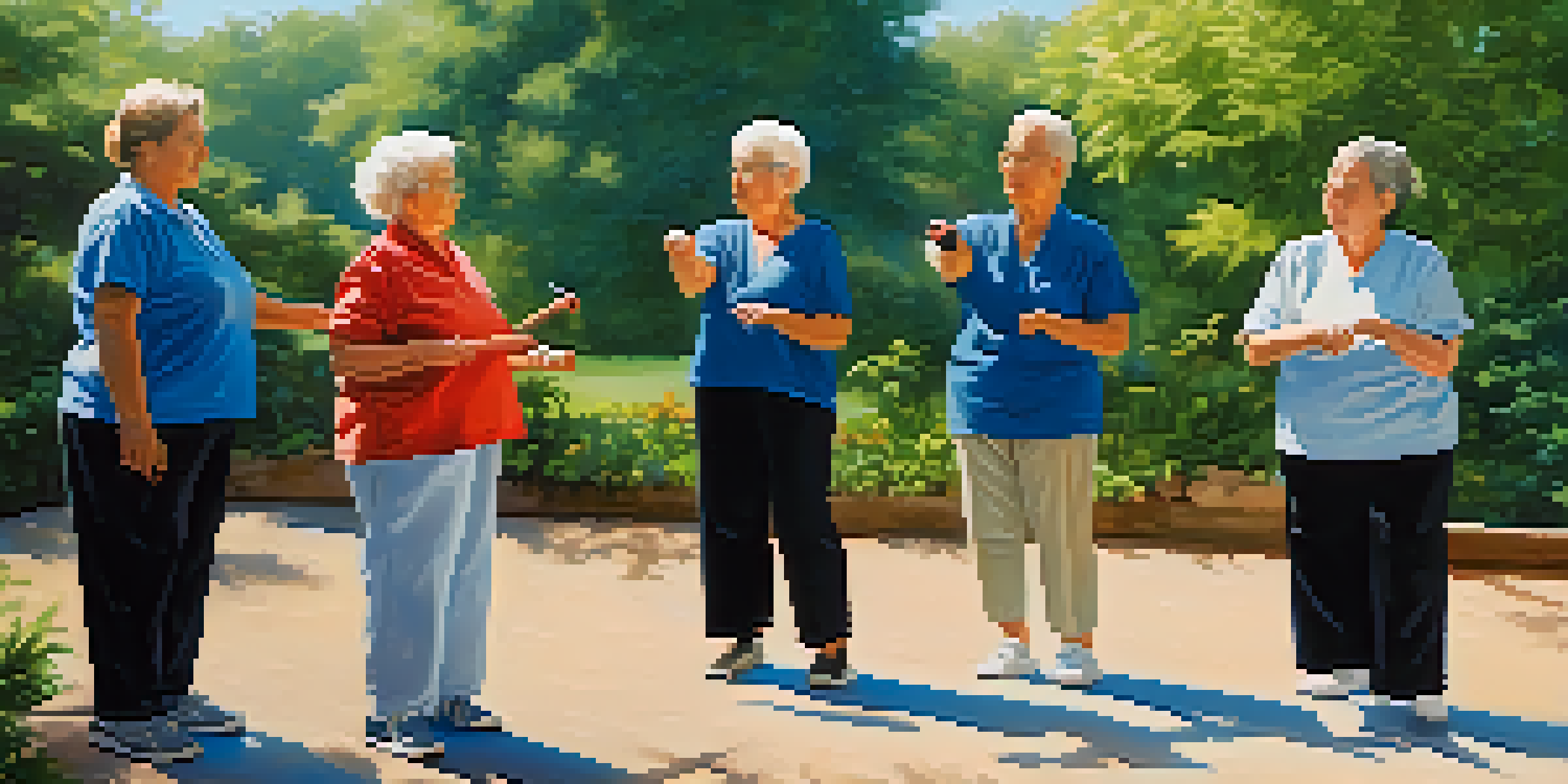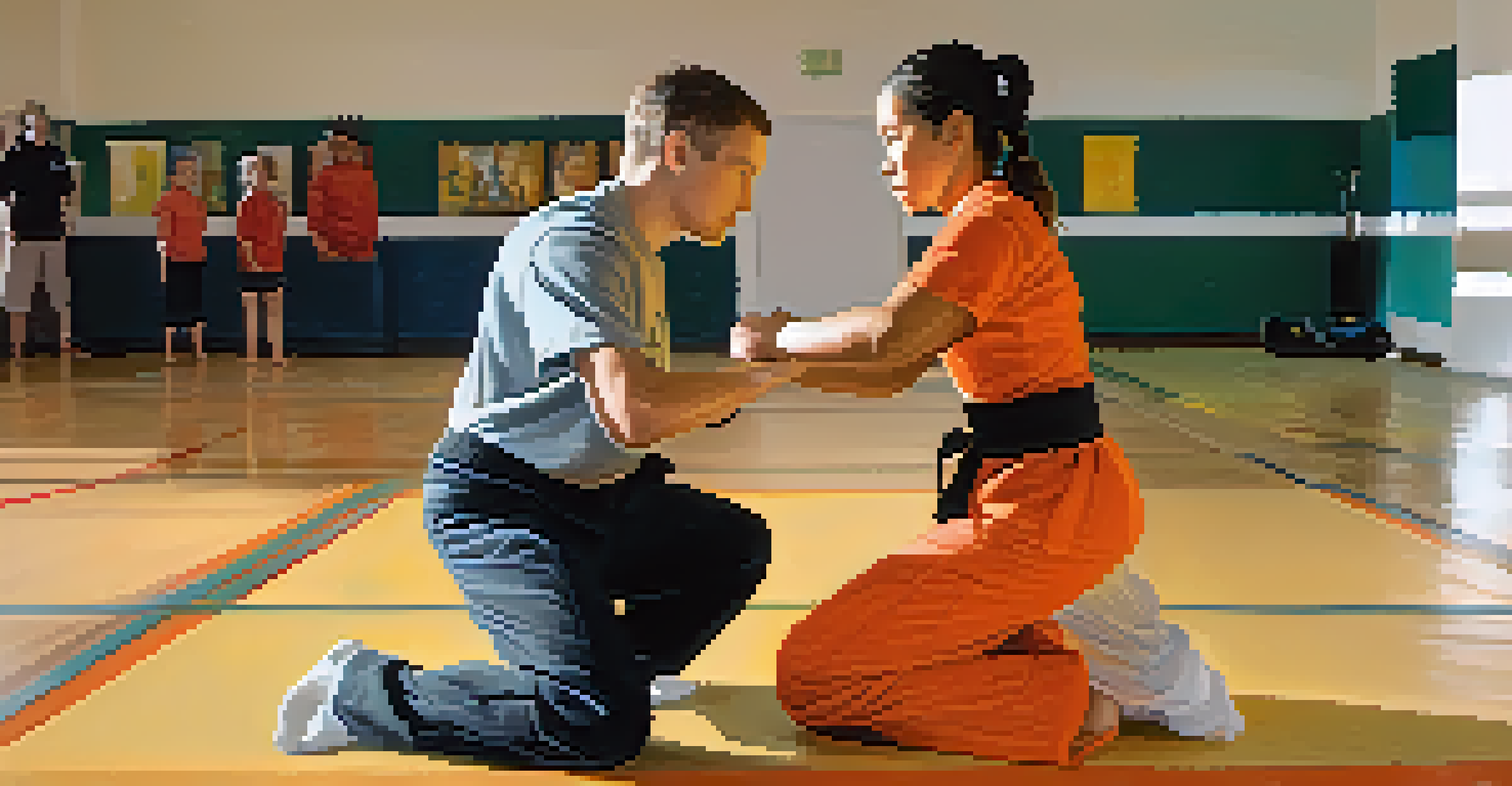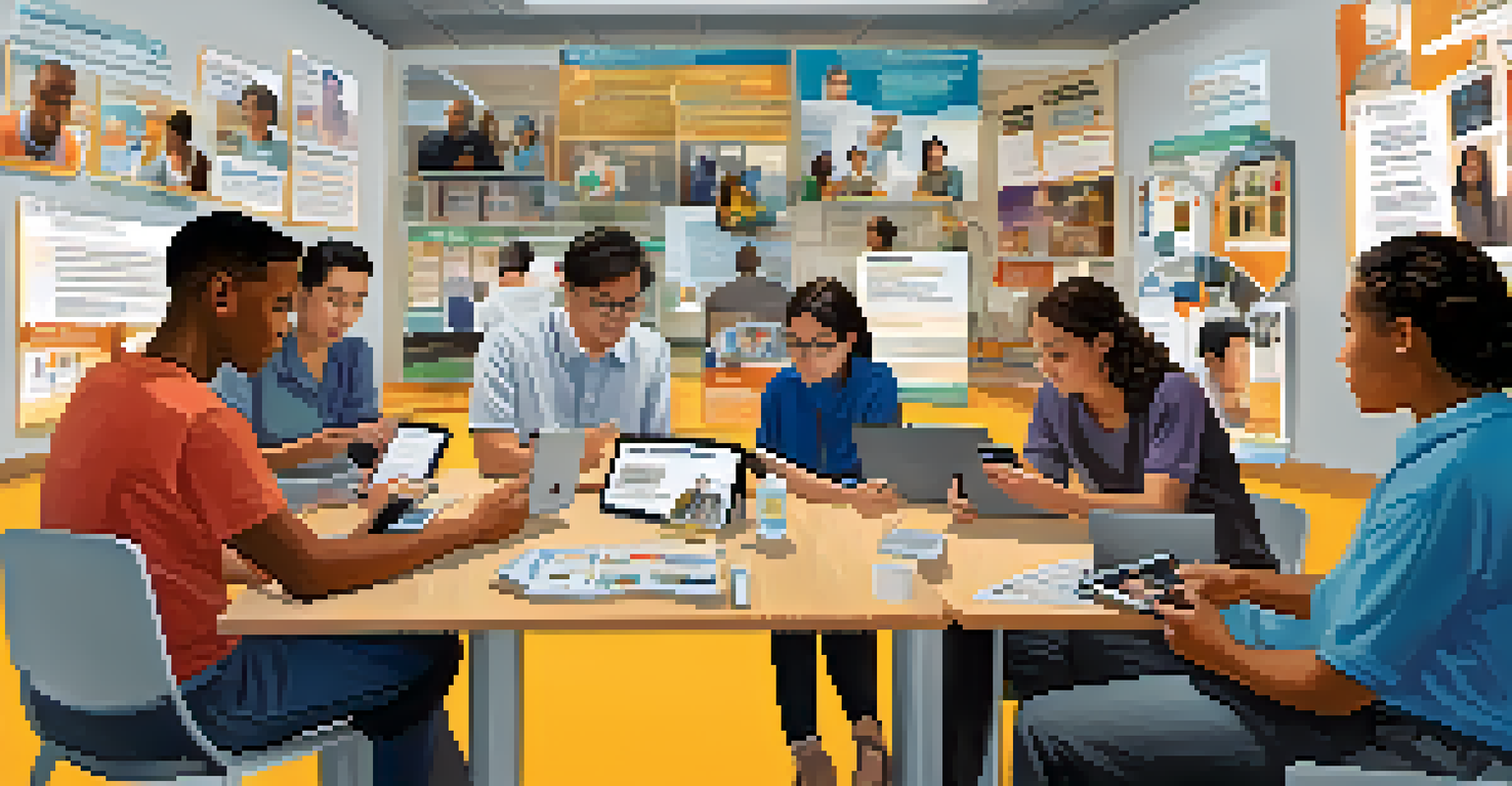Self Defense for Vulnerable Populations: Special Considerations

Understanding Vulnerable Populations in Self Defense
Vulnerable populations, such as the elderly, disabled, or those with specific health concerns, face unique challenges in self-defense situations. These individuals may not possess the same physical capabilities or awareness as others, making tailored strategies crucial. Understanding their needs is the first step toward effective self-defense training that empowers rather than intimidates.
The greatest weapon against stress is our ability to choose one thought over another.
It's essential to recognize that vulnerability doesn't equate to helplessness. Many people in these groups can learn self-defense techniques that increase their confidence and situational awareness. By fostering an environment of support and encouragement, trainers can help individuals feel more equipped to handle potential threats.
Moreover, self-defense training for vulnerable populations should be rooted in respect and dignity. This approach not only promotes physical safety but also nurtures mental resilience. Everyone deserves to feel secure, and self-defense can be a vital tool in achieving that sense of safety.
Adapting Techniques for Physical Limitations
When teaching self-defense to those with physical limitations, it's important to adapt techniques to suit individual capabilities. For instance, someone with reduced mobility may benefit from strategies that focus on leverage rather than strength. This ensures that the techniques are practical and effective for their situation.

Using common scenarios they might encounter helps make the training relatable. For example, practicing how to escape from a grab or how to use everyday items as improvised tools can empower individuals. Real-life applications foster confidence and make the training feel relevant to their lives.
Empowerment through Tailored Training
Self-defense training for vulnerable populations must be customized to meet their unique physical and mental needs, fostering confidence and safety.
Additionally, instructors should promote a mindset that emphasizes awareness and avoidance. Often, the best self-defense is to recognize dangerous situations and steer clear of them. This proactive approach can significantly enhance safety for vulnerable individuals.
Mental Preparedness and Confidence Building
Self-defense is as much about mental preparedness as it is about physical skills. Building confidence can significantly impact how vulnerable individuals respond in threatening situations. Role-playing scenarios can be an effective way to practice responses and reinforce a sense of control.
Empowerment is all about the ability to take charge of one's life and make decisions that affect one's future.
Encouraging participants to visualize successful outcomes can also enhance their mental readiness. This technique, often used in various sports, helps create a positive mindset that can translate into real-life situations. Feeling prepared mentally can reduce anxiety and improve reaction times.
Equipping individuals with tools to manage fear and anxiety is equally important. Techniques like deep breathing or positive affirmations can help maintain calm in stressful situations. By addressing the psychological aspects of self-defense, we empower vulnerable populations to respond effectively when it matters most.
Community Support and Empowerment
Creating a strong support network can enhance the effectiveness of self-defense training for vulnerable populations. Community groups or local organizations can provide resources, workshops, and ongoing support. This network not only fosters a sense of belonging but also helps individuals share experiences and strategies.
Peer support is incredibly valuable; individuals learn better when they feel understood. Sharing stories of overcoming challenges can inspire others and create a sense of camaraderie. This environment encourages participants to practice and refine their skills without fear of judgment.
Community Support Enhances Safety
Building a supportive community network strengthens self-defense skills and encourages individuals to share experiences and strategies.
Moreover, community involvement can lead to broader safety initiatives. When vulnerable populations band together, they can advocate for better safety measures in their neighborhoods. Empowerment through community support extends beyond individual training to a collective approach to safety.
Legal Considerations in Self-Defense
Understanding the legal implications of self-defense is crucial for vulnerable populations. Different regions have varying laws regarding what constitutes justified self-defense. Educating individuals about their rights and responsibilities can prevent legal complications after an incident.
Instructors should provide clear guidelines on the boundaries of self-defense. For instance, knowing when to use force and when to retreat can significantly affect the outcome of a situation. Role-playing legal scenarios helps participants understand these nuances and prepares them for real-life applications.
Additionally, community workshops with legal professionals can enhance understanding. These sessions can clarify common misconceptions and empower individuals to navigate the legal system confidently. Knowledge is power, and being informed can make all the difference in a self-defense situation.
Incorporating Technology for Safety
In today's digital age, technology can play a significant role in enhancing personal safety for vulnerable populations. Smartphone apps designed for emergency situations can provide quick access to help or alert trusted contacts. Familiarity with these tools can boost confidence and preparedness.
Personal safety devices, such as alarms or pepper spray, can also be effective. When incorporated into self-defense training, participants can learn how to use these tools properly and safely. Understanding the technology available to them can empower individuals to take proactive steps in their safety.
Understanding Legal Implications
Educating vulnerable populations about the legal aspects of self-defense is crucial to ensure they know their rights and responsibilities.
Moreover, community initiatives can promote the use of technology for safety. Workshops that teach about digital safety and emergency response apps can help spread awareness. By leveraging technology, vulnerable populations can enhance their self-defense toolkit and feel more secure.
Resources for Continued Learning and Support
Self-defense training shouldn't end after a few sessions; ongoing learning is essential for building skills and confidence. Many organizations and online platforms offer resources specifically designed for vulnerable populations. These resources can include instructional videos, articles, and community forums for shared experiences.
Encouraging individuals to participate in regular practice sessions can reinforce their skills. Participation in local self-defense classes or community groups fosters a sense of accountability and commitment. Continuous learning ensures that skills remain sharp and that individuals feel empowered.

Finally, creating and sharing a list of local resources can be beneficial. This list could include contact information for self-defense instructors, legal advisors, and support groups. Having easy access to these resources can help vulnerable populations feel supported and informed in their self-defense journey.